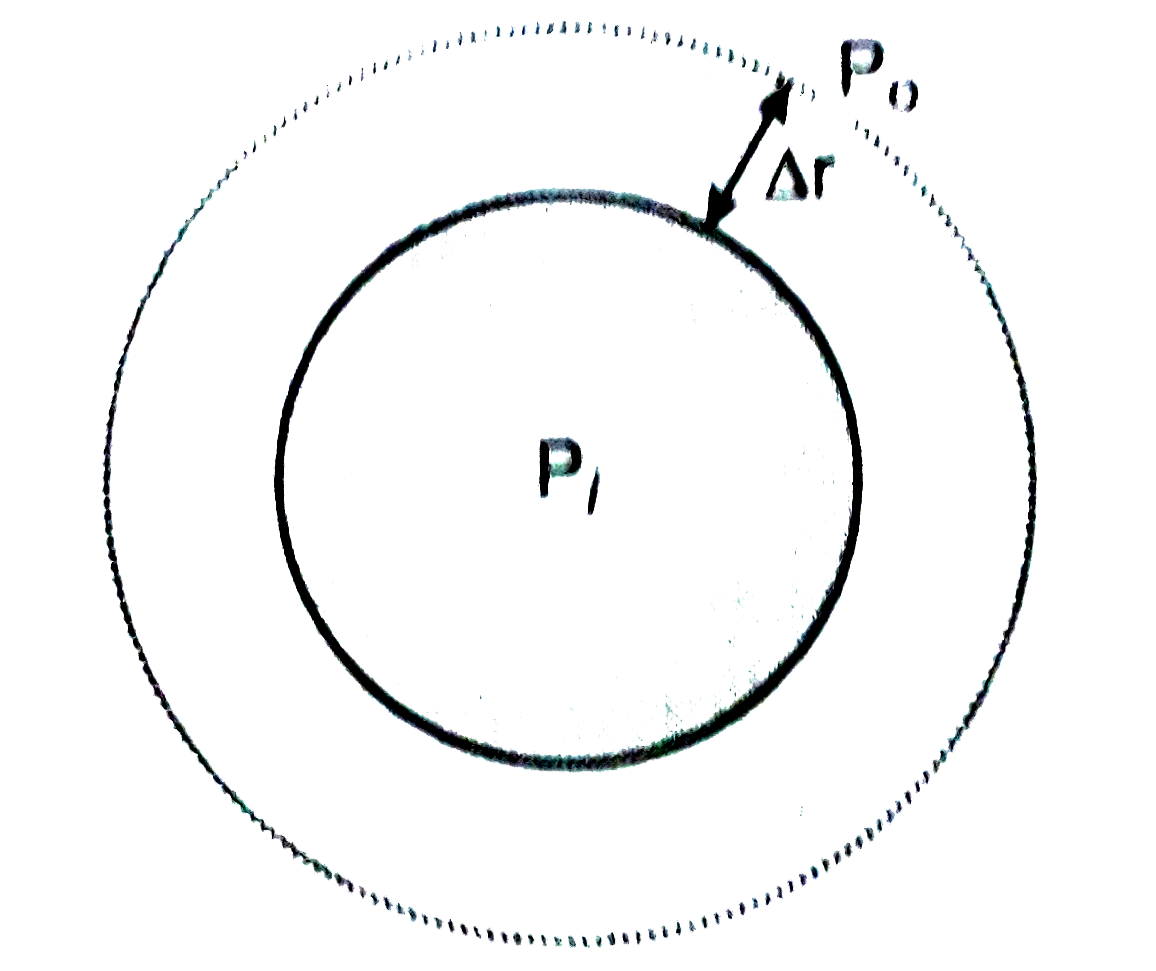Derive Laplace's law for a spherical membrane.
Consider a spherical liquid and let the outside pressure be P0 and inside presure be Pi, such that the excess pressure is Pi−P0.

Let, the radius of the drop increase from r to r=Δr, where Δr is very small, so that the pressure inside the drop remains almost constant.
Initial surface area (A1)=4πr2
Final surface area (A2)=4π(r+Δr)2
=4π(r2+2rΔr+Δr2)
=4πr2+8πrΔr+4πΔr2
As Δr is very small, Δr2 is neglected (i.e., 4πΔr2=0)
Increase in surface area (dA)
=A2−A1=4πr2+8πrΔr−4πr2
Increase in surface area (dA)
=8πrΔr
Work done to increase the surface area 8πrΔr is extra surface energy.
∴dW=TdA
∴dW=T×8πrΔr ...(i)
This work done is equal to the product of the force and the distace Δr.
Excess Force = Excess Pressure × Area
dF=(P1−Po)4πr2
The increase in the radius of the bubble is Δr.
dW=dFΔr=(Pi−Po)4πr2×Δr ...(ii)
Comparing equations (i) and (ii), we get
(Pi−Po)4πr2×Δr=T×8πrΔr
∴(Pi−Po)=2T/r
This is called the Laplace's law of spherical membrane.
Related Playlists
- BOOK - GURUKUL PUBLICATION - MAHARASHTRA PREVIOUS YEAR PAPERSCHAPTER - FEBRUARY 2018EXERCISE - SECTION-II21videos
FEBRUARY 2018
- BOOK - GURUKUL PUBLICATION - MAHARASHTRA PREVIOUS YEAR PAPERSCHAPTER - FEBRUARY 2016EXERCISE - SECTION-II21videos
FEBRUARY 2016
- BOOK - GURUKUL PUBLICATION - MAHARASHTRA PREVIOUS YEAR PAPERSCHAPTER - FEBRUARY 2019EXERCISE - SECTION-D6videos
FEBRUARY 2019
Similar Questions
Derive Laplace's law for a spherical membrane.
View SolutionDerive Laplace's law for a spherical membrane.
View SolutionDerive Dalton's law of particial pressures on the basis of kinetic theory of gases.
View SolutionSTATEMENT-1 The formula connecting u,v and f for a spherical mirrors whose sizes are very small compared to their radii of curvature.
STATEMENT-2 Laws of reflection are strictly valid for plane surfaces, but not for large spherical surfaces.View SolutionDerive Charles's law on the basis of kinetic theory of gases.
View SolutionSTATEMENT-1 Spherical aberration is a defeat of a spherical mirror,in which not all rays focus at single point.
STATEMENT2 The laws of reflecion are not valid for all raysView SolutionDerive Raoult's law for non-volatile solutes.
View SolutionThe Laplace’s formula for sound waves is -
View SolutionAssertion : Kepler's law for planetary motion are consequence of Newton's laws
Reason : Kepler's laws can be derived by using Newton's laws.View SolutionDerive Gay Lussac's law on the basis of kinetic theory of gases.
View Solution


